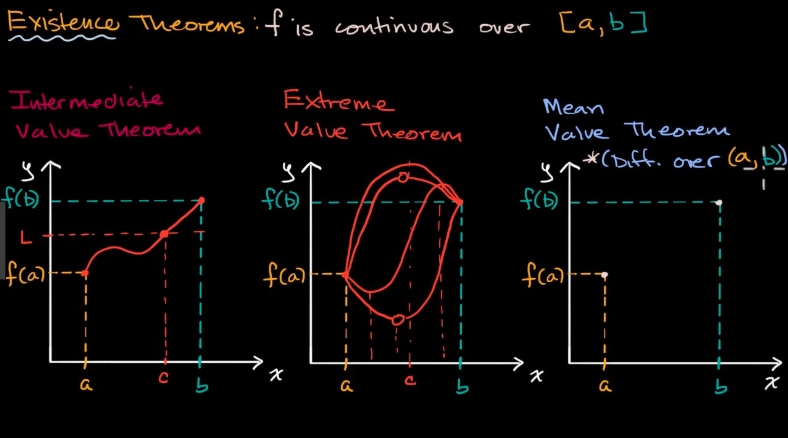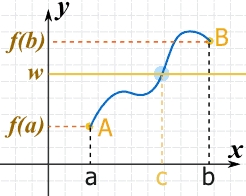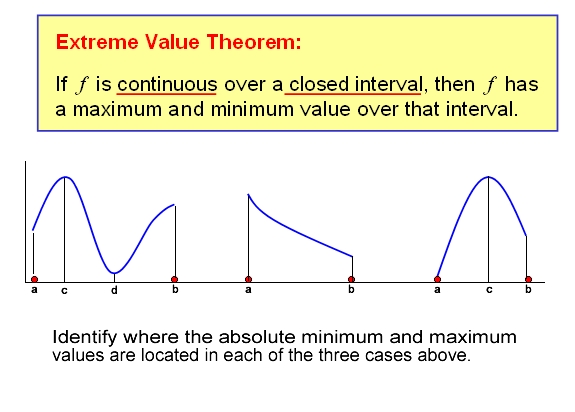Existence Theorems
Existence theorems includes 3 theorems:
Intermediate Value Theorem,Extreme Value Theorem,Mean Value Theorem.
Refer to Khan academy: Existence theorems intro

Intermediate Value Theorem (IVT)
Intermediate Value Theorem (IVT)The IVT is saying:
When we have 2 points connected by a continuous curve: one point below the line, the other point above the line, then there will be at least one place where the curve crosses the line!

Refer to Maths if fun: Intermediate Value Theorem Refer to video: Intermediate Value Theorem Explained
Find roots by using IVT
IVT is often to find roots of a function, which means to find the x value when f(x)=0. So for finding a root, the definition will be:
If
f(x)is continuous and has an interval[a, b], which leads the function thatf(a)<0 & f(b)>0, then it MUST has a pointf(c)=0between interval[a,b], which makes a rootc.
Example
Tell whether the function f(x) = x² - x - 12 in interval [3,5] has a root. Solve:
We got that at both sides of intervals:
f(3)=-6 < 0, andf(5)=8 > 0So according to the Intermediate Value Theorem, there IS a root between
[3,5].Calculate
f(c)=0get the rootc=4.
Extreme Value Theorem (EVT)
Extreme Value Theorem (EVT)The EVT is saying:
There MUST BE a
Max & Minvalue, if the function is continuous over the closed interval.

Refer to Khan lecture: Extreme value theorem Refer to video: Extreme Value Theorem
Mean Value Theorem (MVT)
Mean Value Theorem (MVT)Refer to Khan academy article: Establishing differentiability for MVT
The MVT is saying:
There MUST BE a
tangent linethat has the same slope with theSecant line, if the function is CONTINUOUS over[a,b]and DIFFERENTIABLE over(a,b).
Which also means that, if the conditions are satisfied, then there MUST BE a number c makes the derivative is equal to the Average Rate of Change between the two end points.

Conditions for applying MVT:
Continuous over interval
(a, b)Differentiable over interval
[a, b]

Example
 Solve:
Solve:
He's totally right.
Last updated